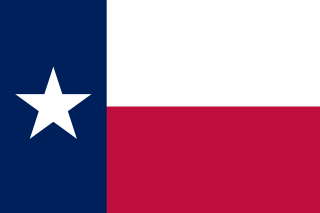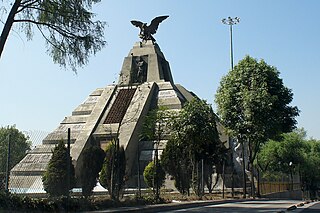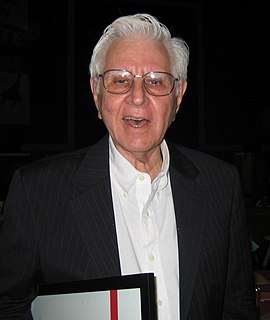
Chicano or Chicana is a chosen identity for many Mexican Americans in the United States. The label Chicano is sometimes used interchangeably with Mexican American, although the terms have different meanings. While Mexican-American identity was related to encouraging assimilation into White American society and separating the community from the African-American political struggle, Chicano identity emerged among anti-assimilationist youth. Some belonged to the Pachuco subculture, and claimed the term. The term Chicano was widely reclaimed by ethnic Mexicans in the 1960s and 1970s to express political empowerment, ethnic solidarity, and pride in being of Indigenous descent, diverging from the more assimilationist Mexican American term. Chicano Movement leaders collaborated with Black Power movement. Chicano youth in barrios rejected cultural assimilation into whiteness and embraced their identity and worldview as a form of empowerment and resistance.
The masculine term Latino, along with its feminine form Latina, is a noun and adjective, often used in English, Spanish, and Portuguese, that most commonly refers to United States inhabitants who have cultural ties to Latin America.

Mestizo is a term used for racial classification to refer to a person of mixed European and Indigenous American ancestry. In certain regions such as Latin America, it may also refer to people who are culturally European regardless of ancestry. The term was used as an ethnic/racial category for mixed-race castas that evolved during the Spanish Empire. Although, broadly speaking, mestizo means someone of mixed European/Indigenous heritage, the term did not have a fixed meaning in the colonial period. It was a formal label for individuals in official documents, such as censuses, parish registers, Inquisition trials, and others. Priests and royal officials might have classified persons as mestizos, but individuals also used the term in self-identification.

Tejanos are the residents of the state of Texas who are culturally descended from the Mexican population of Tejas and Coahuila that lived in the region prior to it becoming what is now known as the state of Texas before it became a U.S. state in 1845. The term is also sometimes applied to all Texans of Mexican descent.

Spanglish is any language variety that results from conversationally combining Spanish and English. The term is mostly used in the United States and refers to a blend of the words and grammar of the two languages. More narrowly, Spanglish can specifically mean a variety of Spanish with heavy use of English loanwords.

Mexican Americans are Americans of Mexican heritage. In 2019, Mexican Americans comprised 11.3% of the US population and 61.5% of all Latino Americans. In 2019, 71% of Mexican Americans were born in the United States, though they make up 53% of the total population of foreign-born Latino Americans and 25% of the total foreign-born population. The United States is home to the second-largest Mexican community in the world, second only to Mexico itself. Most Mexican Americans reside in the Southwest. Many Mexican Americans living in the United States have assimilated into American culture which has made some become less connected with their culture of birth and sometimes creates an identity crisis.
Race and ethnicity in the United States census, defined by the federal Office of Management and Budget (OMB) and the United States Census Bureau, are the self-identified categories of race or races and ethnicity chosen by residents, with which they most closely identify, and indicate whether they are of Hispanic or Latino origin.

Cholo is a loosely defined Spanish term that has had various meanings. Its origin is a somewhat derogatory term for people of mixed-blood heritage in the Spanish Empire in Latin America and its successor states as part of castas, the informal ranking of society by heritage. Cholo no longer necessarily refers only to ethnic heritage, and is not always meant negatively. Cholo can signify anything from its original sense as a person with one Amerindian parent and one Mestizo parent, "gangster" in Mexico, an insult in some South American countries, or a "person who dresses in the manner of a certain subculture" in the United States as part of the cholo subculture.

Pachucos are male members of a counterculture associated with zoot suit fashion, jazz and swing music, a distinct dialect known as caló, and self-empowerment in rejecting assimilation into Anglo-American society that emerged in El Paso, Texas in the late 1930s. The pachuco counterculture flourished among Chicano boys and men in the 1940s as a symbol of rebellion, especially in Los Angeles. It spread to women who became known as pachucas and were perceived as unruly, masculine, and un-American. Some pachucos adopted strong attitudes of social defiance, engaging in behavior seen as deviant by white/Anglo-American society, such as marijuana smoking, gang activity, and a turbulent night life. Although concentrated among a relatively small group of Mexican Americans, the pachuco counterculture became iconic among Chicanos and a predecessor for the cholo subculture which emerged among Chicano youth in the 1980s.

Hispanic and Latino Americans are Americans of Spanish or Latin American ancestry. More broadly, these demographics include all Americans who identify as Hispanic or Latino regardless of ancestry. As of 2020, the Census Bureau estimated that there were almost 65.3 million Hispanics and Latinos living in the United States and Puerto Rico.
Chicano English, or Mexican-American English, is a dialect of American English spoken primarily by Mexican Americans, particularly in the Southwestern United States ranging from Texas to California, as well as in Chicago. Chicano English is sometimes mistakenly conflated with Spanglish, which is a mixing of Spanish and English; however, Chicano English is a fully formed and native dialect of English, not a "learner English" or interlanguage. It is even the native dialect of some speakers who know little to no Spanish, or have no Mexican heritage.
Pocho is slang in Spanish used in Mexico to refer to Mexican Americans and Mexican emigrants. It is often used pejoratively to describe a Mexican expatriate or a person of Mexican ancestry who lacks fluency or the ability to speak in Spanish and knowledge of Mexican culture. It derives from the Spanish word pocho, used to describe fruit that has become rotten or discolored.
In Hispanic America, criollo is a term used originally to describe people of Spanish descent born in the colonies. In different Latin American countries the word has come to have different meanings, sometimes referring to the local-born majority.

The Spanish expression la Raza has historically been used to refer to the Hispanophone populations, considered as an ethnic or racial unit historically deriving from the Spanish Empire, and the process of racial intermixing of the Spanish colonizers with the indigenous populations of the Americas.

Rodolfo "Rudy" Francisco Acuña, Ph.D., is an American historian, professor emeritus at California State University, Northridge, and a scholar of Chicano studies. He authored the 1972 book Occupied America: A History of Chicanos, approaching history of the Southwestern United States with a heavy emphasis on Mexican Americans. An eighth edition was published in 2014. Acuña has also written for the Los Angeles Times,The Los Angeles Herald-Express, La Opinión, and numerous other newspapers. His work emphasizes the struggles of Mexican American people. Acuña is an activist and he has supported numerous causes of the Chicano Movement. He currently teaches an on-line history course at California State University, Northridge.

Barrioization is a theory developed by Chicano scholars Albert Camarillo and Richard Griswold del Castillo to explain the historical formation and maintenance of ethnically segregated neighborhoods of Chicanos and Latinos in the United States. The term was first coined by Camarillo in his book Chicanos in a Changing Society (1979). The process was explained in the context of Los Angeles by Griswold del Castillo in The Los Angeles Barrio, 1850-1890: A Social History (1979). Camarillo defined the term as "the formation of residentially and segregated Chicano barrios or neighbourhoods." The term is used in the field of Human Geography.

José Antonio Villarreal was an American Chicano novelist. Villarreal was born in 1924 in Los Angeles, California, to migrant Mexican farmworkers. Like Juan Manuel Rubio in Pocho, Villarreal's father fought with Pancho Villa in the Mexican Revolution. He spent four years in the Navy before attending the University of California at Berkeley in 1950.
Hispanic and Latino are ethnonyms used to refer collectively to the inhabitants of the United States who are of Spanish or Latin American ancestry. While the terms are sometimes used interchangeably, for example, by the United States Census Bureau, Hispanic includes people with ancestry from Spain and Latin American Spanish-speaking countries, while Latino includes people from Latin American countries that were formerly colonized by Spain and Portugal.
Latinx is a neologism in American English, sometimes used to refer to people of Latin American cultural or ethnic identity in the United States. The gender-neutral ⟨-x⟩ suffix replaces the ⟨-o/-a⟩ ending of Latino and Latina that are typical of grammatical gender in Spanish. Its plural is Latinxs. Words used for similar purposes include Latin@ and Latine. Related gender-neutral neologisms include Chicanx and Xicanx.
Xicanx is an English-language gender-neutral neologism and identity referring to people of Mexican and Latin American descent in the United States. The ⟨-x⟩ suffix replaces the ⟨-o/-a⟩ ending of Chicano and Chicana that are typical of grammatical gender in Spanish. The term references a connection to Indigeneity, decolonial consciousness, inclusion of genders outside the Western gender binary imposed through colonialism, and transnationality. In contrast, most Hispanics tend to define themselves in nationalist terms, such as by a Latin American country of origin.











